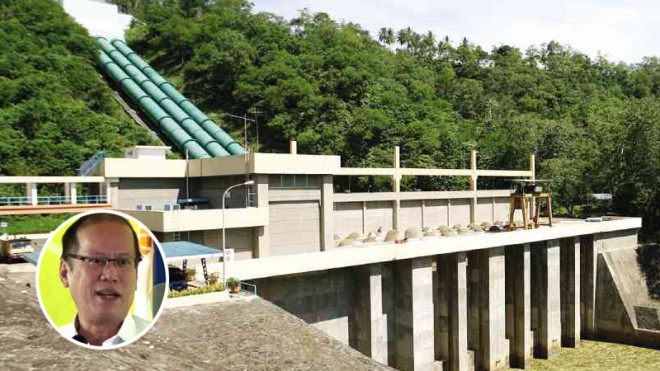
Is President Aquino about to use emergency powers to deal with the looming energy shortage in Luzon in 2015 when several world leaders will come to the Philippines for the Apec summit? LYN RILLON
MANILA, Philippines–Is President Aquino about to use emergency powers to deal with the looming energy shortage in Luzon in 2015 when several world leaders will come to the Philippines for the Asia-Pacific Economic Cooperation (Apec) summit?
A technical report elaborating on his State of the Nation Address (Sona) on July 28 said the government would tap private firms to put up 500- to 600-megawatt power plants by March next year.
Citing Department of Energy (DOE) figures, the report projected an energy shortage of between 400 MW and 1,000 MW for Luzon from March to May 2015,
“resulting in rotating brownouts.”
“Mindanao may experience longer brownouts in 2015 if no new power plants come in,” the report said, but noted that the June 2014 supply would be enough for “the country’s highest projected demand level of 11,943 MW” this year.
The document suggested that the government “invoke Section 71 of Republic Act No. 9136, or the Electric Power Industry Reform Act of 2001” in order to deal with the need for additional capacity during the critical period in Luzon in 2015.
“Upon issuance of the joint [congressional] resolution, the government would contract a private proponent to construct capacities equivalent to 500 to 600 MW power plants and operate and maintain the same for a period of five years.”
Also known as the “Electric Power Crisis Provision,” Section 71 states that: “Upon determination by the President of the Philippines of an imminent shortage of the supply of electricity, Congress may authorize, through a joint resolution, the establishment of additional generating capacity under such terms and conditions as it may approve.”
But Energy Secretary Jericho Petilla on Sunday said he was not sure whether the President had agreed to his proposal that the provision be invoked.
“I also don’t know why it was worded that way [in the Sona technical report],” Petilla told the Inquirer by phone. “But when we had a discussion [the week before the Sona], the President said that would be the last resort.”
Prepared by the Office of the President, the Sona technical report compiled accomplishment reports submitted by different government agencies.
Petilla acknowledged that information on how the government intended to resolve the looming power shortage came from his department. Still, he was unsure why the Sona report stated categorically that government would “invoke Section 71.”
“Let’s just put it this way: If the President wanted to invoke it, he would have already mentioned it in the Sona. The mere fact he didn’t say it in the Sona means he had not invoked it,” he said.
In his address to the joint session of Congress, Aquino said he had instructed Petilla to “coordinate with the Joint Congressional Power Commission, the Energy Regulatory Commission, members of industry, and, most importantly, the consumers, in order to increase our capacity to respond to this problem.”
“We want to be completely ready so that we can avoid paralysis if the worst-case scenario arises. The goal: To have planned solutions for problems that will not arise until next year,” he said.
Power industry officials and businessmen have warned of a looming shortage as a result of the growing demand for electricity brought by the booming economy.
Economic activity tends to spur electricity demand. For the Luzon grid, a 1-percent growth in gross domestic product translates into an increase in electricity consumption by 0.6 percent, according to DOE documents.
For the Visayas, it’s 1 percent and for the Mindanao grid, 0.8 percent.
The last time Congress granted a president emergency powers to solve crippling outages was in 1993. The Electric Power Crisis Act, or Republic Act No. 7648, allowed then President Fidel Ramos to enter into agreements that favored independent power producers (IPPs).
The deals ended the crisis but resulted in higher electricity rates with the imposition of the purchased power adjustment in which consumers were required to pay whether or not they used the electricity produced by the IPPs.
The IPP deals have led to power rates in the Philippines becoming among the highest in Asia, adversely affecting the competitiveness of the country’s industries.
Based on the Sona technical report, the government, once a joint congressional resolution was issued, “would contract a private proponent to construct capacities equivalent to 500 to 600 MW power plants.”
The report included an assurance that the government, which would “operate and maintain” such facilities for five years, would “not intervene in the power generation business.”
“The additional capacity will only be run when the grid is in yellow alert upon the determination of the system operator or upon the instruction of the DOE,” it said. “The additional capacity will also be traded and will be a price taker on the Wholesale Electricity Spot Market.
RELATED STORIES
Rufus Rodriguez: No to Aquino’s emergency powers
Greenpeace urges caution on emergency powers